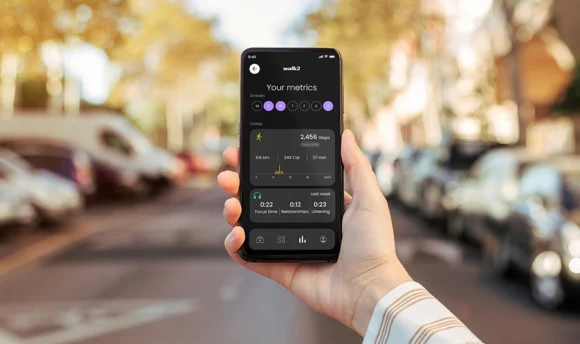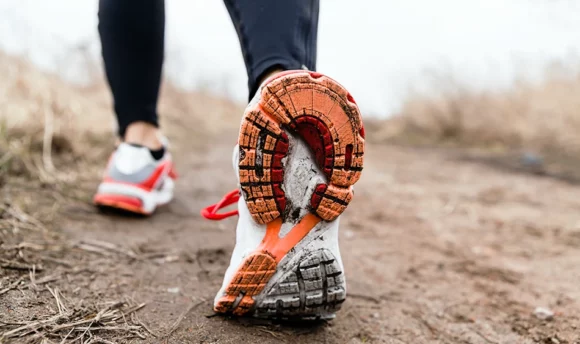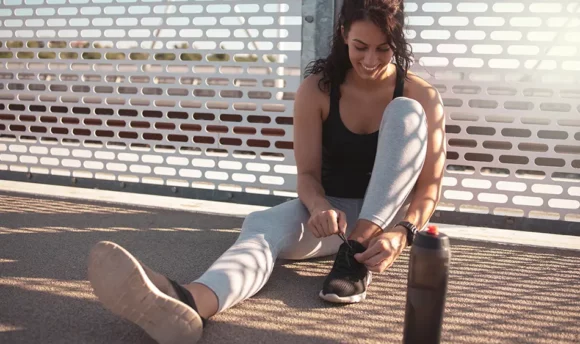Does Running Lower Blood Pressure?
Do you struggle with high blood pressure? Today’s discussion is about how going on frequent runs will help with your problem.

The many reported benefits of running seem almost too good to be true. Can something as simple and accessible as running improve your cardiovascular health, strengthen your lungs, relieve stress, and possibly even lower your blood pressure?
With its ultimate convenience and low cost, running is the lifestyle change you need to support improved heart health and blood pressure levels. Even if you do not have high blood pressure, running is a great way to forget the day-to-day stresses of life and just enjoy feeling good.
Read on to learn more about how running can significantly improve your BP levels and overall well-being.
Does Running Lower Blood Pressure?
Yes, running is a powerful tool in the fight against high blood pressure. When you run, your heart needs to work harder to pump blood through your blood vessels to your muscles and other tissues, which can help improve the function of your cardiovascular system.
According to the numbers, high blood pressure readings are between 140/90mmHg and 179/99mmHg, while low blood pressure is below 90/60mmHg. So, you want to be within 90/60mmHg and 140/90mmHg.
Going on frequent 1 to 3-mile runs can help strengthen your heart and improve blood flow, which can help reduce your blood pressure and lower your risk of developing these problems.
It has also been demonstrated that runners show physiological signs of improved overall cardiovascular health compared to inactive and uninvolved regular aerobic exercise.
On that note, if you are having trouble with any of the running exercises, we would suggest checking out the best apps for running!
Three Easy Running Exercises to Lower Blood Pressure
While there are many running workouts, here are three simple ones to help reduce your blood pressure readings.
#1 Running in place
Running in place is similar to traditional running, offering the same benefits, including the ability to lower blood pressure, and it ranks as number one on our list because of its ability to fit into any lifestyle.
Regarding reducing blood pressure, it does this by decreasing blood vessel stiffness and increasing blood flow.
Another way base run helps lower blood pressure is by promoting weight loss, which is a key factor for hypertension. By burning calories, you can reduce body weight and decrease the amount of pressure your heart has to exert to pump blood.
Running in place can also help reduce body weight and improve insulin sensitivity, which can help lower blood pressure.
#2 Jogging
Jogging is a moderate exercise that can help control high blood pressure levels by impacting your cardiovascular system.
In addition to the direct effects on your cardiovascular system, jogging can also help reduce blood pressure in other ways. For example, exercise can help reduce stress and improve mood, contributing to lowered blood pressure.
Start by jogging for short distances and gradually increase the distance as your fitness improves.
#3 Base run
Base run is a type of running exercise that involves running at a steady, comfortable pace for a sustained period of time. This type of exercise is considered easy because it is done at a comfortable pace that is not too intense or strenuous.
Base run helps lower blood pressure by improving the functioning of the cardiovascular system. This improves blood circulation throughout your body, which can help lower your blood pressure.
What Exercises Should Be Avoided With High Blood Pressure?
While we have a list of easy-to-do running exercises that will positively influence blood pressure levels, there are some exercises that you need to avoid, particularly if you are suffering from high blood pressure.
Here is a list of three exercises to avoid.
#1 Weight lifting
Number one on the list of exercises to avoid is weight lifting. Weight lifting can cause a temporary increase in blood pressure for several reasons. First, the muscles used during strength training require a larger amount of blood flow, which can cause an increase in blood pressure.
Second, when you lift weights, you may hold your breath or strain your muscles, which can also cause a temporary increase in blood pressure. Finally, the act of raising and lowering weights can cause a slight increase in blood pressure.
However, if you intend to lift weights, you should talk to your doctor first and get a professional trainer to guide you.
#2 Sprinting
Sprinting is a high-intensity exercise, and it is not recommended for people with high blood pressure to partake in such vigorous activities because it proceeds to increase your blood pressure and puts additional strain on your heart.
#3 Interval training
Interval training involves alternating short bursts of intense exercise with periods of rest or lower-intensity activity. This type of exercise can result in a rapid increase in blood pressure, which puts you at risk.
During high-intensity exercise, the heart has to pump harder and faster to supply the body with oxygen and nutrients, causing a spike in blood pressure. The risk is even far greater for those who are unfit and have been physically inactive over prolonged periods.
FAQs
Regular exercise improves your heart muscles, meaning they perform their function with less effort. This reduces the strain on your blood vessels, leading to more stable blood pressure.
It is generally safe to exercise with high blood pressure. However, you need to consult your doctor to ensure your exercise does not harm you.
You only need a minimum of 30 minutes of running daily to see positive effects.
A Word From Our Coach
Running is a good exercise that can help you lower systolic blood pressure. However, it is important that you shy away from any vigorous iteration of this physical activity, as it can increase even resting blood pressure.
It’s important to remember that the benefits of running and other forms of physical activity on blood pressure can vary depending on your age, fitness level, and other factors, so it’s always a good idea to speak with your doctor before starting a new exercise program.
Once you get the green light, start small and gradually build up your mileage as your fitness level improves.
Conclusion
On the whole, it is clear that running and other low to moderate aerobic exercises can be beneficial for people seeking lowered blood pressure.
Aside from that, running offers other health benefits, including catering to weight management, enhancing sleep quality, boosting cardiorespiratory and immune function, halting heart disease, and improving mental health.
However, if you are looking at exercise as a means to lower your blood pressure, we recommend booking a doctor’s appointment before starting any exercise program. Even at that, it would be in your best interest to start slow. After all, slow and steady wins the race!

















































 Select your language:
Select your language: 








